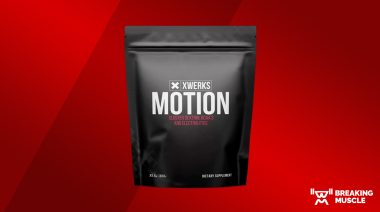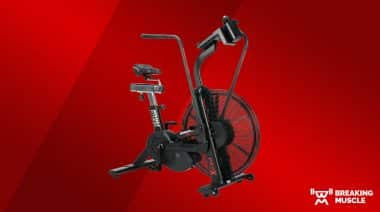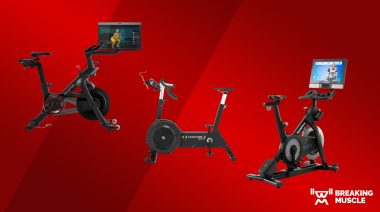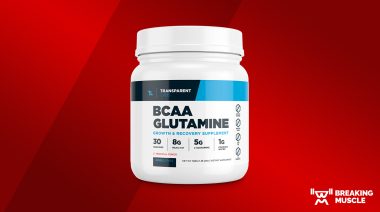
Sprained ankle? Ice it. Knee pain? Ice it. Tough workout? You guessed it – another job for ice. Everyone knows that ice is the cure-all for injury and soreness, just like everyone knows lobotomies are the cure all for mental illness. And surely people still practice bloodletting – you know, where a medical professional intentionally cuts you and then attaches a leach to the wound to drain some blood. Great cure for just about any condition, from asthma to comas. If you haven’t heard of lobotomies or bloodletting, that’s because despite being commonplace treatments of the past, these incredibly outdated (and crazy) practices have been retired to the Museum of Questionable Medical Devices. And according to Gary Reinl, ice packs are next.
In Iced! The Illusionary Treatment Option, Gary introduces himself to the readers by chronicling his experiences, but more importantly by revealing the facts and science behind his message that icing is wrong. So who is Gary Reinl? I suppose if you were looking for a label, you could call him a trainer. However, Gary has clocked over forty years of working in the sports medicine industry with a diverse and impressive resume that includes training, research, consulting, and more. Therefore, to label Gary as “just” a trainer would be a gross understatement. If you are amongst the many loyal followers of Dr. Kelly Starrett and his insanely popular site, Mobility WOD, then perhaps you are familiar with Gary, as his message has already reached many people through a collaborative video blog post with Dr. Starrett in 2012. Gary credits this video for facilitating a large and rapid shift in the public’s view and use of icing.
Once upon a time, the application of ice was simply non-existent. In Iced!, Gary Reinl attributes the beginning of “the ice age” to a single event, reminding me of the kind of event described Malcolm Gladwell’s books, The Tipping Point or Outliers. Reinl explains that after an individual’s arm became severed in an accident, physicians were able to reattach the arm because the tissue was persevered on ice. While this kind of event would hardly make news now, the successful repair was cutting edge at the time. Following the reports that ice miraculously saved this arm, Gary notes that the indication for icing changed from severed tissue to damaged tissue, without any factual support or evidence. As a result, an ice pack of sorts can be found in just about every home and doctor’s office as a quick, convenient, inexpensive, and foolproof treatment.
Reinl’s narrative creates intrigue and interest while he presents a plausible turn of events, and then, once your curiosity is piqued, he piles on the facts. Just as someone had to be the first to suggest sewing an arm back on, someone had to be the first to suggest using ice to treat an injury. As a result, someone also had to be the first to question the value of ice. Personally, as a physical therapist, I know firsthand how many people (professional or not) use ice as treatment. Like Gary explains, I also know that most people use ice without doing their due diligence. Just as you’d vet your surgeon prior to hopping on his table, wouldn’t you want to know if ice was an effective treatment option? Or even more importantly, wouldn’t you want to make sure ice wasn’t causing additional harm?
Some of the important information shared in Iced! includes the rationale behind ice usage, which is that cold therapy is used to reduce swelling and inflammation. This makes sense unless you know the whole story. Throughout Iced!, Gary ensures that his readers understand another important message: inflammation is not bad. In fact, without inflammation, healing cannot occur.
Gary Reinl not only asks his audience to question the common knowledge that icing helps treat injuries, but he also nullifies subsequent arguments by educating his readers. In fact, if I have any criticism of Gary’s work, it’s that he presents the information too much, and can be a bit repetitive. But having been both a student and an educator, I know that information needs to be repeated in order for the learner to digest the facts.
Another potential double-edged sword is the format Gary uses to share his message. In order to capture an audience, his text uses a narrative style to present his case against ice. To best present the facts, a more academic textbook approach could be better. However, there are plenty of texts that discuss the physiology of icing and inflammation. Clearly, even when presented in academic texts, the facts about icing were not able to stop what Gary describes as “the deep freeze.” Furthermore, I suspect these texts are not quite as popular as Gary or his friends (including the one and only Kelly Starrett).
Thanks to Iced!, athletes craving the torture of a post-competition ice bath, physicians ordering their patients to apply ice for twenty minutes every hour, and even the harshest defenders of ice must at the very least ask the question: does ice help? Gary Reinl does an exceptional job of providing a comprehensive presentation of the effects of ice, why people started using ice to treat injuries, inconclusive research on the benefits of ice, and evidence in current literature that ice can potentially delay healing – the very process this modality is supposed to help.
Personally, I confess: I have used ice, but not for several years now. Initially, perhaps my decrease in ice use was because I never liked icing myself, and most patients don’t like it either. But over the years, after using many treatment techniques aimed at increasing circulation, I decided that since ice slows circulation, I didn’t want to counteract my efforts. I later happened upon Gary’s video on Mobility WOD, and with validation in tow, I now firmly advise against icing. I am grateful to Gary Reinl for standing behind his message for decades and ultimately writing Iced!. I hope this message helps facilitate what I call the “trickle down effect,” through which best practices make their way from the top to the general public and the likes of Little League coaches and parents of non-athletes.
I encourage professionals, particularly those in the field of sports medicine, to read Iced! for their own continued education. I would not be in the least bit surprised if this book turns up as required reading at institutions of higher learning. Perhaps the marketing team behind those great Ragu commercials might even pick up this story and wonder – what other questionable choices have I made?
“Iced!” is available for $15.29 at Amazon.com.






